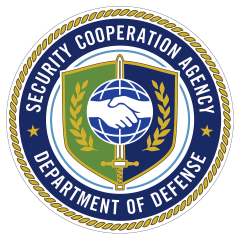Latest Thread
You are using an out of date browser. It may not display this or other websites correctly.
You should upgrade or use an alternative browser.
You should upgrade or use an alternative browser.
Possible, but probably won't be necessary. US Navy's ALQ-99 jamming pods do have ram-air turbines to power the equipment.If a platform like Hürjet doesn't have enough energy generation within the engine for that radar, is it possible to add additional generators for radar like in a pod?

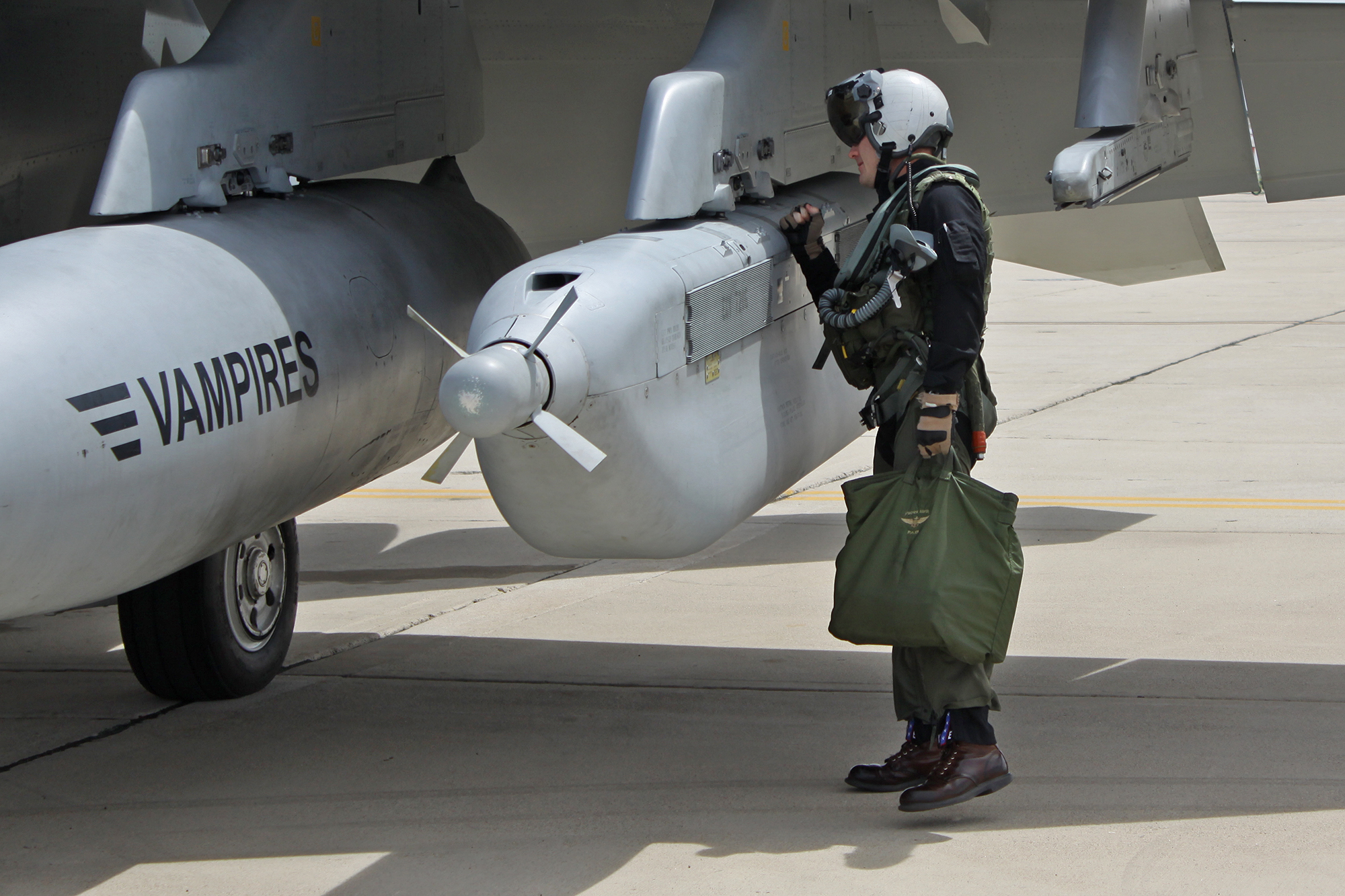
If we manage to keep the APU running mid-flight and channel its power to the AESA array that would do wonders.
As far as I have understood in twin-engine configuration one of the engine turbine work clockwise and the other engine turbine counter clockwise to neutralize the eddy vortexes created by the engines. Why? Don't ask me, someone with turbojet engine knowledge may know.It's a bit tangent but is there any difference between F110-GE-129 engines that powers aircrafts in twin-engine configuration and single engine configuration? Any difference in dimensions, ECUs, software etc.? In essence, can the engine power an F16 if it was dismounted from an F15 and vice versa?
Twin engines are most likely adjusted as matching pairs because you want to have 2 engine thrust work as one and not have one of the engines push harder in such that your jet goes left while you steer straight.
From simple explanations by Mahmut Aksit I understood that you cannot use the (2x) single engine of the F16 directly on TFx but vice versa I do not know
You‘ve to downsize the radar also in weight & no. of GaN T/R modules IMO. Afaik Hurjet‘s radome is wider than FA-50, still small compared to F-16. For Block 20 KAI will install Raytheon‘s air-cooled PahntomStrike AESA radar with half the weight of usual models and less power intake. That means also lesser range and performance …If a platform like Hürjet doesn't have enough energy generation within the engine for that radar, is it possible to add additional generators for radar like in a pod?
The Weekly Debrief: F/A-50 Pushes Gallium Nitride Radars Into Mainstream | Aviation Week Network
Dueling AESA options for the F/A-50 show how far the technology has come in a short amount of time, thanks to the advent of gallium nitride semiconductors.
Last edited:
I had wondered this question once especially for turboprops but the answer I found on internet was that while it can be done this way, it is not an absolute requirement for engines to rotate in different directions although control surfaces and stuff would have to adjust for it.As far as I have understood in twin-engine configuration one of the engine turbine work clockwise and the other engine turbine counter clockwise to neutralize the eddy vortexes created by the engines. Why? Don't ask me, someone with turbojet engine knowledge may know.
Twin engines are most likely adjusted as matching pairs because you want to have 2 engine thrust work as one and not have one of the engines push harder in such that your jet goes left while you steer straight.
From simple explanations by Mahmut Aksit I understood that you cannot use the (2x) single engine of the F16 directly on TFx but vice versa I do not know
In fact, after a bit more googling it seems this is not even a thing for turbofans at all. It seems mostly propeller planes do opposite directions
Last edited:
@Nutuk ,As far as I have understood in twin-engine configuration one of the engine turbine work clockwise and the other engine turbine counter clockwise to neutralize the eddy vortexes created by the engines. Why? Don't ask me, someone with turbojet engine knowledge may know.
Twin engines are most likely adjusted as matching pairs because you want to have 2 engine thrust work as one and not have one of the engines push harder in such that your jet goes left while you steer straight.
From simple explanations by Mahmut Aksit I understood that you cannot use the (2x) single engine of the F16 directly on TFx but vice versa I do not know
I think you will find that with twin engined jet propulsion, both engines rotate in the same direction. If memory serves it is generally anti clockwise looking at the engine from the front. Yet almost all RR engines and CFM engines rotate clockwise. Almost all GE and P&W engines rotate anti clockwise. This is valid, be it single or multiple engines.
What makes a difference is the FADEC system they use. A single engined plane’s FADEC is very different to a twin engined plane’s FADEC. (Full Authority Digital Engine Control)
Also F16 has fixed inlets and F15 has variable inlets.
F15 Eagle air intakes are movable and change their angle during flight to give the optimal air flow for the engines under current conditions of airspeed, altitude, and throttle setting
GE produces F110-129 engines in A,C and E versions for F15 twin engine
GE produces F110-129 engines in B and D versions for F16 single engine
These engines are produced to perform to spec in the platform they were meant to fly.
The latest spec F15 engine is F110GE129-E version that flies F15EX. This is the engine we have on KAAN.
Again we should ask this question to @Nilgiri for further insight in to difference.
Last edited:
Khagan1923
Contributor
At a press conference held at the LITEXPO Exhibition and Fair Center, President Erdoğan made a statement confirming the aim to take steps regarding Airbus.
While there were no technical details in the statement, we may see concrete steps in the near future regarding the purchase of additional A400Ms in line with the Turkish air force's need for military transport aircraft (it may be 13 aircraft that Spain canceled the acquisition of) and the A330 MRTT procurement, which has been speculated many times regarding the need for tanker aircraft.
via Tolga Özbek
13 A400M + 13 C130J second hand from UK would lessen the load immensely on our A400M fleet.
It's a bit tangent but are there any differences between F110-GE-129 engines that powers aircrafts in twin-engine configuration and single engine configuration? Any difference in dimensions, ECUs, software etc.? In essence, can the engine power an F16 if it was dismounted from an F15 and vice versa?
There are differences but not dimensional w.r.t physical interface and attachment points etc.
One engine can 100% substitute another, but in practice this is rarely done as there are optimisations done on the production + qualification side (w.r.t the inlet, FADEC tuning, trim etc) given their different airflow requirements and dynamic thrust responses etc.
i.e push come to shove yes you could switch between GE and PW on almost any F-16 AFAIK, but there will be trade-offs and performance losses involved. Not ideal, but its an idea being explored for example retiring engines early and providing these to both platforms:

Special Report: Export Rules Hamper Decommissioning of 200 F-15 Fighter Engines | JAPAN Forward
Changing the export rules to make the engines available to like-minded countries with F-15 and F-16 fighter jets benefits Japan in ways well beyond the money.
Originally the main reason to bring GE into the F-15 powerplant (and thus F-16 downstream too given these were bound together by the original economy of scale argument) was for the pentagon to be able to apply pressure on PW to quickly find solutions for the original engine issues.
@Nutuk ,
I think you will find that with twin engined jet propulsion, both engines rotate in the same direction. If memory serves it is generally anti clockwise looking at the engine from the front. Yet almost all RR engines and CFM engines rotate clockwise. Almost all GE and P&W engines rotate anti clockwise. This is valid, be it single or multiple engines.
What makes a difference is the FADEC system they use. A single engined plane’s FADEC is very different to a twin engined plane’s FADEC. (Full Authority Digital Engine Control)
Also F16 has fixed inlets and F15 has variable inlets.
F15 Eagle air intakes are movable and change their angle during flight to give the optimal air flow for the engines under current conditions of airspeed, altitude, and throttle setting
GE produces F110-129 engines in A,C and E versions for F15 twin engine
GE produces F110-129 engines in B and D versions for F16 single engine
These engines are produced to perform to spec in the platform they were meant to fly.
The latest spec F15 engine is F110GE129-E version that flies F15EX. This is the engine we have on KAAN.
Again we should ask this question to @Nilgiri for further insight in to difference.
Yes you are more or less correct.
The "doubling" gyroscopic, torque, jetwash effects et al. are minimal given the size of the aircraft involved relative to the powerplant dimensions, weight and moment distributions involved.
When the % is intense enough (say a small enough aircraft with say large enough propellers with sizeable rotatable moments of inertias etc relative to the overall weight/positioning/dampening of the system)....then you build the argument for counter-rotation.
That's why its a fairly common feature on propeller aircraft as propellers notably have far larger relative diameters to the aircraft.
i.e the issue is important for say a V-22 to take the extreme, that the props rotate counter to each other (even for level cruise flight, as its even more clear for VTOL/hover as a tail rotor is done away with). Its same issue in lot of propeller aircraft, having 2 gearboxes (one for each direction) is a cost, but is worth it to address the issue at this %intensity and helping counter as much of the "combined" propwash effects at various flight conditions as possible too (that are not as prevalent in jetwash given the jet velocity and downstream distance away from a/c etc the issue starts to crop up which tends to be irrelevant)
Otherwise its not economical to make two sets of production and MRO support lines for clockwise and counterclockwise rotation for one engine. i.e just pick one. That covers almost any jet aircraft, single or double engine.
There is the issue of spin for double and multi engined jet aircraft (especially commercial where they can be spread quite far from the center of mass).....with regards to the (combined) gyro effect being able to add to it and hampering spin recovery compared to having it neutral (by counter rotating engines) and not hampering this. But these cases are very rare to consider and are more economical to address in the larger control system to begin with. The issue materialises more significantly with propeller aircraft and hence often is addressed by counter rotation becoming more relevant again relative to production+MRO costs.
There are however a few exceptions where the intensity issue becomes severe enough for jet aircraft like the Harrier given its relative small size, large engine involved, large diameter fan involved etc and its peculiar requirements imposed at low speed (the vertical portion and pilot weight distribution etc) that made it easy to upset if the engine was adding its torque and gyroscopic effect (especially in the pitch - yaw coefficient in the stability control matrix). Hence the Pegasus engine had to be specially designed to have the LP spool rotate in opposite direction to the HP spool to get the net torque and gyro effect as low as possible.
But these exceptions are rare...generally the effects are minimal to the larger control-stability, aeroelasticity and aerodynamic matrices (specifically their eigenvectors) involved in jet aircraft...so the economics of having just one cookie cutter design w.r.t rotation overrides it easily.
Apologies for any typos/errors, its off top of my head and I proof read just once.
Edit: changed contra to counter (these are two different things).
Last edited:
Originally the main reason to bring GE into the F-15 powerplant (and thus F-16 downstream too given these were bound together by the original economy of scale argument) was for the pentagon to be able to apply pressure on PW to quickly find solutions for the original engine issues.
For those that would like to read more on the matter:
Article from 1979:
Yeah, more or less. To give you a bit more context, Turkiye modernized it's F-16 through PO III program. The original plan was to upgrade all block 30 aircraft into CCIP "lite" configuration and all block 40 and 50 aircraft into CCIP+ configuration, but later the plan was altered and only around 130 block 40 and 50 aircrafts were upgraded. 80 of them are equipped with Raytheon MMC-7000 and 50 with BAE CFCC. The rest are still equipped with original F-16 mission computer LRU.I strongly suspect, F-16 that didn't undergo Peace Onyx III (PO-III) programme can be upgraded to ÖZGÜR.
"Interestingly, the air-launch of the BOZDOĞAN missile was performed from an F-16C Block 40 aircraft, which did not receive avionic upgrades under PO-III and F-16 MSM Projects. The non-modernized F-16C/D Block 30 and Block 40 aircraft are equipped with the older generation mission computer, and source codes of the Operational Flight Program (OFP) that runs on this mission computer were purchased by Turkey many years ago."
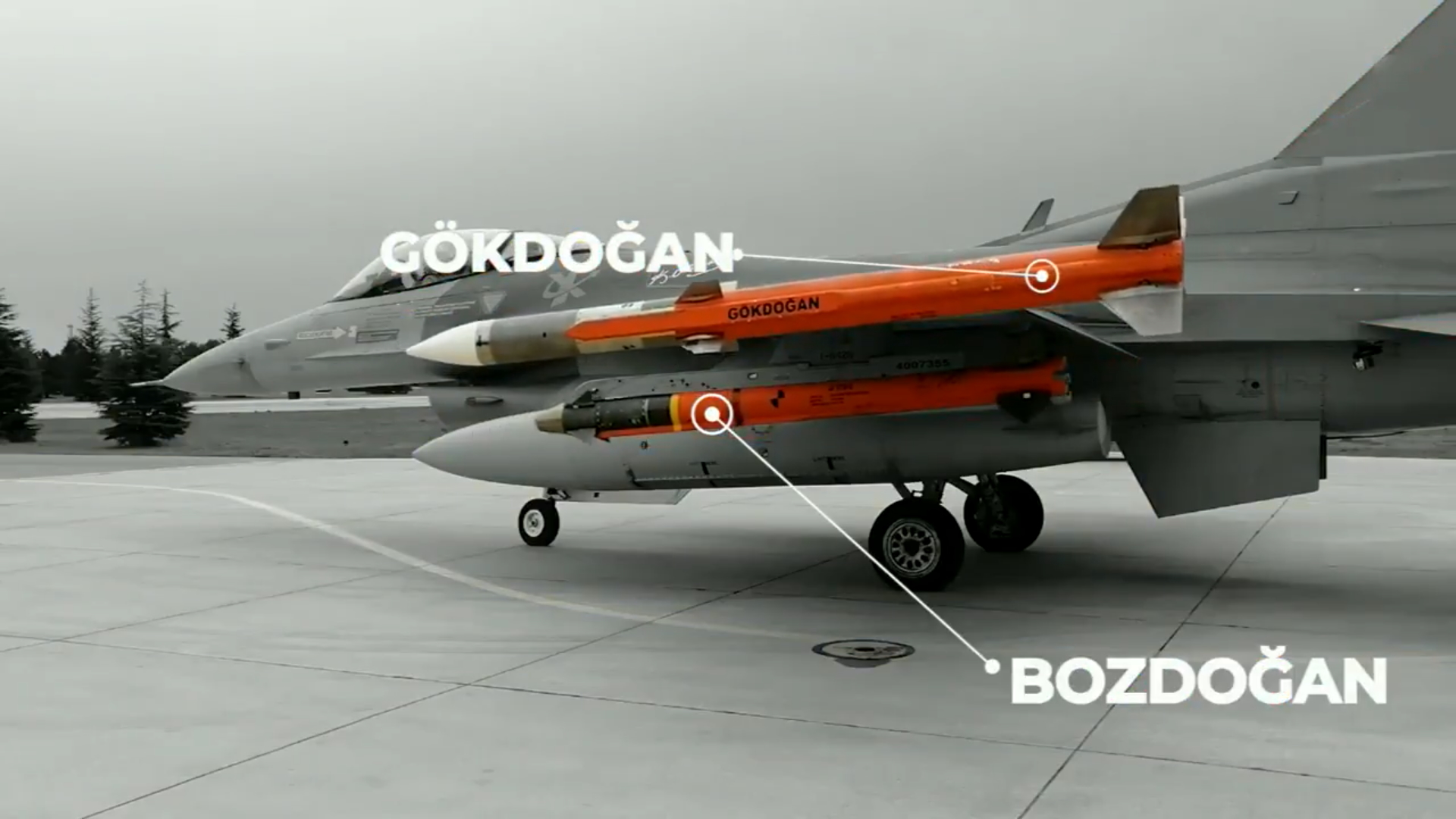
President ERDOĞAN Announces Successful Test of BOZDOĞAN WVR Air-to-Air Missile
On April 14, 2021, President Recep Tayyip ERDOĞAN announced that the BOZDOĞAN IIR guided within visual range (WVR) air-to-air missile developed by youth Turkish technicians and engineers under GÖKTUĞ Project has successfully destroyed its target (TUSAŞ`s ŞİMŞEK high-Speed target Drone) during...www.defenceturkey.com
And according to this news, the numbers of F-16 modernized under PO-III ws 163.

TAI hands over last upgraded F-16 aircraft to Turkish Air Force - Airforce Technology
Turkish Aerospace Industries (TAI) has handed over the final upgraded F-16 Fighting Falcon aircraft to the Turkish Air Force during a ceremony at its facility in Ankara.www.airforce-technology.com
Conclusion- So, that should leaves roughly 80 F-16.
Given 35 of them are already undergoing ÖZGÜR modernization.
That leaves 45 more that Turkey has source codes of.
@dBSPL
So those block 30 and 40 which were still equipped with the old mission computer are the planned recipient of the new Ozgur upgrade package. If I were THK, I wouldn't want to spend all that money replacing perfectly fine MMC-7000 and CFCC conmputers which are the same models being offered to other air forces around the world as block 70/72 configuration.
Regardless of what Ismail Demir might have said, for the reason I've mentioned above I'm not sure if block 50 aircraft will actually receive Ozgur any time soon. Maybe in the future when block 50 and 50+ aircraft undergo life extension program but current focus should be on those 80-ish block 30 and 40 aircraft.Didn't we hear definitive announcement from Ismail Demir that ÖZGÜR would be extended to block 40 and 50?
Yes, but at what pace, at what rate? Please explain this $20 billion to me in such a way that I can be more hopeful about the future of a sophisticated modernization program arising from the OZGUR project. I don't know how we will squeeze ÖZGÜR into the same period when we are signing the largest project development and serial production contracts for the KAAN and Hurjet projects in the history of the Turkish defense industry for the next 10 years, while at the same time signing the largest aviation purchase contract in our history from the USA. Either this speculated figure is complete nonsense, or the budget of the Ministry of Defense will increase 2-3 times.
Well, the problem is that Turkish block 70 upgrade (Peace Onyx V?) will most likely be done in TUSAS, since as @Bozan said, current Lockheed capacity for F-16 after the move to SC is very small compared to what they had in Fort Worth. The lead time extends to late 2020s. Not only that, TUSAS also did the PO 3 themselves in the past and other countries who are upgrading their own F-16s are doing that on their home soil. So overall there's not much to argue when it comes to capcity. Once Ozgur development is complete, its going to be upgraded on the same line in same facility.The lead time on f16 from US is in years
Still, i think it is possible.
$20 billions seems to be official estimate.
https://crsreports.congress.gov/product/pdf/R/R47493
However, i find it hard to believe Turkey would move forward with such absurd numbers.
Instead, 32 Typhoon for $6 billions and modernization of remaining 45 F-16 that Turkey (reportedly) has source code of should be just enough (+KE and Akinci) to hold onto until the KAAN arrives.
@Chocopie
900 A2A and 800 A2G weapons is mentioned in the report.
I think this 20 billion dollar figure is not that meaningful just yet because we don't know the details. CRS reports could only cite public information and we still don't have anything like an official DSCA document listing which exact equipments are going to be sold to Turkiye.Let’s elaborate on your rough calculations:
According to official US defence sources the cost of Greece’s 123 plane upgrade kit will cost them 2.4 billion dollars. This includes 125 Aesa radars and 123 kits of avionics etc.
That means Greeks are paying just under 20 million dollars per kit. I can’t see us paying a great deal more than that. So for the 79 kits, it totals 1.55 billion dollars.
Regarding the F16 V70 planes themselves; there are various quotes made by LM:
Slovakia has been offered 14 planes for 800million. That is 57 million a piece.
For Colombia they have offered 108 million dollars a piece for 24 planes and 133 million dollars a piece for 12 planes. However these include variety of different munitions.
Bulgaria is contemplating to buy 8 F16 planes for 1.3 billion. That means 162 million a piece.
Below site quotes f16v70 price to be 63million a piece

Top 10 most expensive fighter jets in 2024
What do you think are the most expensive fighter jets in the world today? (hint, it’s not the F35)www.aerotime.aero
As Turkey will want to produce these aircrafts and their engines in house at Tusas and TEI, I can’t see us paying more than Slovakian planes.
So that makes 2.4 billion for the 40 planes.
Regarding 600 AAMs:
If we are thinking of buying the long range AIM 120 D version (Since we have Gokdogan in production it is only apt to think that we will go for the Aim 120D) : UK ordered 200 of them for 650 million dollars. Making it 3.25 million a piece. So for 600 missiles it would total 1.95 billion dollars.
Regarding the 800 Precision Guided Munition :
It s difficult to guess what we would be buying from US, since we have so many different versions of this type of munition in our inventory. The only munition that makes sense is something like an AGM-88G HARM as Akbaba is still in development stage (Since Greeks have recently ordered the E version) at a price of nearly 1 million a piece making 0.8 billion.
So in total the logical payable cost of this order should be no more than 6 billion dollars. 20 billion dollars is outrageously high and in explicable.
I think there's a possibility that this "20 billion" includes not just what's mentioned in the CRS report (that is 40 new aircraft + kit for 79 + miscellaneous ranging from missiles and bombs to spare parts and services) might not be what the "20 billion" encompasses. Rather, I think it's a figure for a total possible contract including options to upgrade remaining Turkish F-16s, which amounts to 70+ aircraft. Also, that option could also include additional new aircraft. Afterall, DSCA grant often involves possible total number cleared by the US, not the actual number of equippment the recipient country is actually considering to acquire. So let's all wait and see.
Wait, how's 20 billion TRY 2 billion USD? XE.com says that's more like 785 million USD as 1 USD = 26 TRY. Am I getting this wrong? Also you said that total sum of the two contracts is 1.2 billion USD. What's with all the differences between those numbers?After news, Aselsan shares went through the roof on the stock exchange today. Just when we were talking about 20 billion dollars, it felt like medicine. A total contract size of over 2 billion dollars indicates a large-scale F-16 modernization? If so, I think Murad-AESA for F-16s is now ready.
Edit to dear Mod's edit:
A total of two contracts were signed.
The first contract is worth 2.618.751.172,- TL and 132.078.069,- USD.
The second contract is worth 18.073.289.646,- TL and 1.065.303.880,- USD.
The total amount of the two project contracts is TL 20,692,040,818 and USD 1,197,381,949. At the current exchange rate, this is around 2 billion dollars.
KAP notification : https://www.kap.org.tr/tr/Bildirim/1171374
The reason for I stating the entire contract in dollars is that if these contracts are related to the modernization of fighter jets, which seems to be the case, it will be easier to compare them with similar examples from world once we know the scope of the contract and how many platforms it covers.
Anyways, if we go by the 20 billion TRY number, I think I'm fairly on point that 80 F-16s are on the pipeline for the modernization into Ozgur configuration.
Wait, F-15EX still uses CSD? I've thought it would be using VSCF scheme by now. I guess its one of those legacy design carry-oversi.e certification already done w.r.t better generator stator wedges, diodes, better armature, better constant speed drive etc. and whatever else may have been involved regarding specifics of the F-15 EX project (w.r.t latest generator + electric supply) that F-16 can now double dip into without needing to do again (with PW).
There are 2 different agreements which are done in TRY and USD separately, so total of 1.2 billion USD is the figure for only USD based ones, 0.8 billion comes from TRY onesWait, how's 20 billion TRY 2 billion USD? XE.com says that's more like 785 million USD as 1 USD = 26 TRY. Am I getting this wrong? Also you said that total sum of the two contracts is 1.2 billion USD. What's with all the differences between those numbers?
Anyways, if we go by the 20 billion TRY number, I think I'm fairly on point that 80 F-16s are on the pipeline for the modernization into Ozgur configuration.
Wait, how's 20 billion TRY 2 billion USD? XE.com says that's more like 785 million USD as 1 USD = 26 TRY. Am I getting this wrong? Also you said that total sum of the two contracts is 1.2 billion USD. What's with all the differences between those numbers?
Anyways, if we go by the 20 billion TRY number, I think I'm fairly on point that 80 F-16s are on the pipeline for the modernization into Ozgur configuration.
A record 52 billion lira contract in the Turkish defense industry
One of the record-breaking contracts of the Turkish defense industry sector was signed between ASELSAN and TAI today. The contract covers aircraft modernization.
Today, ASELSAN and TAI signed two different contracts regarding aircraft modernization. The cost of the first contract was 2,618,751,172 Turkish Liras and 132,078,069 USD; The second contract is 18,073,289,646 Turkish Liras and 1,065,303,880 US Dollars, with a total value of 20,692,040,818 Turkish Liras and 1,197,381,949 US Dollars.
It was not disclosed to which project the two contracts, whose approximate value corresponds to 52 billion Turkish Liras, are related. However, it is emphasized that an aircraft modernization project of this size may be related to the F-16 ÖZGÜR Project, which was delivered for the first time recently . Nevertheless, the exact information is expected to be announced by the Ministry of National Defense and the Presidency of Defense Industries in the future.
ÖZGÜR Project
The ÖZGÜR Project will also be integrated into the F-16s in the Turkish Air Force inventory. Many critical missiles and pods such as GÖKDOĞAN, BOZDOĞAN, GEZGİN, ATMACA, ÇAKIR, GÖKHAN, ASELPOD, EHPOD and SOM will be used in F-16s.
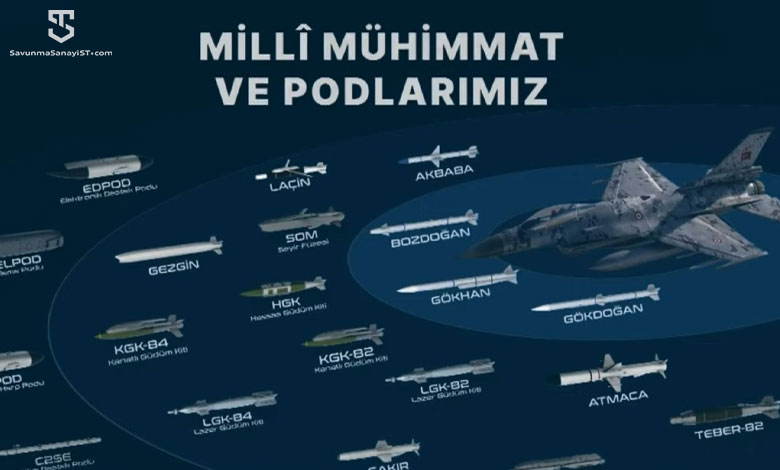
The avionics modernization project first applied to the F-16 Block 30 warplanes;
- National Mission Computer,
- System Interface Unit,
- Cockpit Upper Front Control Panel,
- Fuel Hydraulic Indicator, Engine Indicator Display,
- Emergency Indicator,
- National Sound Safety Device,
- National Friend - Foe Identification (IFF) System,
- Multimode Receiver,
- Inertial Navigation System,
- Interface Blanking Unit,
- It includes the Center Cockpit Display and the Color Multifunction Display integration.
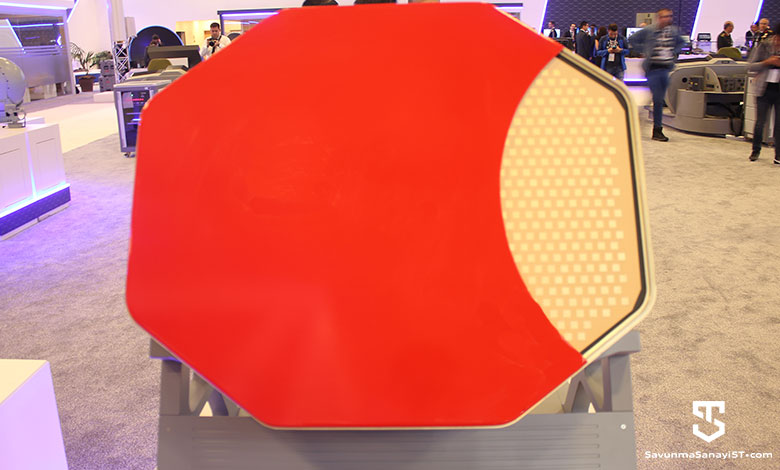
On the other hand, MURAD AESA Radar, which is under development, is expected to be integrated into aircraft in the future.
@SavunmaSanayiST.com
Aselsan is a stock exchange listed company. It has to reveal every transaction. They have released within that scope that they have signed a deal worth around 2 billion dollars worth with TUSAS.Wait, how's 20 billion TRY 2 billion USD? XE.com says that's more like 785 million USD as 1 USD = 26 TRY. Am I getting this wrong? Also you said that total sum of the two contracts is 1.2 billion USD. What's with all the differences between those numbers?
Anyways, if we go by the 20 billion TRY number, I think I'm fairly on point that 80 F-16s are on the pipeline for the modernization into Ozgur configuration.
At the bottom of this official file it is clearly stated that there are two portions of this deal. One portion is in US dollars (presumably due to Aselsan sourcing parts in dollars itself and has to make a contract in dollars) as well as a portion of the contract being in TL; 20.7 billionTL for Turkish Lira sourced goods (which is just under 0.8billion dollars) + 1.2 billion dollars for goods sourced in US dollars. So with exchange rate being what it’ is that is around 2 billion dollars in total.
Last edited:
Ohhh, now I get it. Thanks for the explanation.Aselsan is a stock exchange listed company. It has to reveal every transaction. They have released within that scope that they have signed a deal worth around 2 billion dollars worth with TUSAS.
At the bottom of this official file it is clearly stated that there are two portions of this deal. One portion is in US dollars (presumably due to Aselsan sourcing parts in dollars itself and has to make a contract in dollars) as well as a portion of the contract being in TL; 20.7 billionTL for Turkish sourced goods (which is just under 0.8billion dollars) + 1.2 billion dollars for goods sourced in US dollars. So with exchange rate being what it’s is it is around 2 billion dollars in total.
Wait, F-15EX still uses CSD? I've thought it would be using VSCF scheme by now. I guess its one of those legacy design carry-overs
It could have, I haven't really looked it up (F-15 EX generator). It is from my intuition regarding the impact certification has in the arena....but there are always exceptions too sometimes if the advantage is pressing enough.
They generally update line replaceable units, modular peripherals etc... (to say best available) when a entirely new clean sheet project is started and a design driver benefits enough at that point given thats the stage a raw scale of engineers are gathered compared to generally what you have later in mature system and design drivers, budgets etc are focused and narrowed much more and most things are cookie cut as possible rather than broach for more cert and testing.
But maybe F-15EX does have it if someone looks it up and manages to find the system in detail.
Within aerospace, aviation is generally more flexible and progressive on this compared to space (where you will see some extremely old stuff persevering even over clean sheet simply by certification costs/time and way these work in modular way w.r.t say a bus). Space tends to be extremely conservative here.










